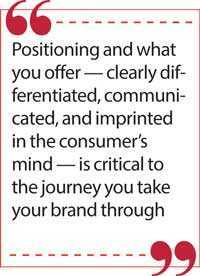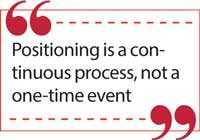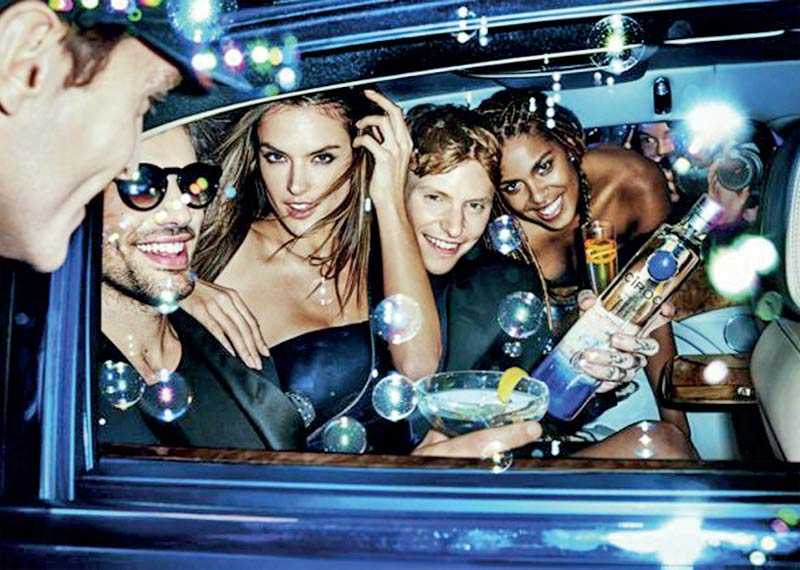Sunday Apr 20, 2025
Sunday Apr 20, 2025
Wednesday, 17 March 2021 00:00 - - {{hitsCtrl.values.hits}}

Coca-Cola addressed negative perceptions towards CSD and brought new consumers who were willing to pay a premium into the category
|
CEAT Vice President Sales, Marketing and Exports Madhushanka Ranatunga
|
Brand strategy is central to business strategy as a recognised driver of business performance and commercial impact. But today, the fastest growing organisations no longer think of brand positioning as a static, category-based, abstract construct to be checked and reviewed every so often. Instead, they move along an overall trajectory of purpose that brings the business, brand and customer closer than they’ve ever been.
The idea that enduring
competitive advantage can be created by repeatedly doing the same thing, no matter how efficiently, has disappeared forever. The age of brand positioning is drawing to an end
Join us over the next few weeks and months as Sri Lanka’s top CMOs share their perspectives on The End of Positioning. Michel Nugawela asks CEAT Vice President Sales, Marketing and Exports
Madhushanka Ranatunga for his
opinion on the ongoing relevance of positioning to establish a brand within the target market. Following are excerpts from the interview:
In the recent past, we’ve witnessed many marketing strategies that have been driven tactically in the short term versus building brands over the longer term. Considering this, you might conclude that positioning is dead.
However, there are also brands that have developed and consistently managed their positionings, and they have reaped significant benefits in their respective categories. Locally, Softlogic Life’s new positioning has premiumised the brand and made it very youthful. And globally, Guinness’s new positioning has revived the stout category, moving it away from middle-aged men drinking in a pub to youthful, pleasurable moments with more colour, vibrancy and life in its expression.
Two important considerations here are, firstly, how you manage your positioning, and secondly, how the external environment behaves. Today you’re seeing the external environment – the category, your competitors and customers – shifting beneath your feet. Therefore, if you are to remain on top of the game and gain market share and value, you require a competitive advantage. That could predominantly come through differentiation: your positioning.
Continuously revisit the positioning
 |
 |
 |
Positioning isn’t a one-time event. It’s a continuous process in which the brand marketer has to be flexible and adaptable as he or she differentiates across touch points. Sales and marketing teams should consistently pick insights and observe global trends to understand the existing and evolving landscapes in their respective categories.
The category you’re currently in could also become irrelevant in the future so you need to periodically revisit your positioning strategy to ensure the brand is clearly differentiated and emotionally connected to the consumer, while expanding its footprint as the landscape evolves.
For example, the carbonated soft drinks category is very competitive with strong local brands, flavours, and acquired taste profiles. A few years back at Coca-Cola, we read the evolving landscape in the beverage space and introduced Minute Maid to address the growing negative perceptions of consumers towards soft drinks. Despite extensive competition, we continued to grow in the category while creating a new space and bringing new consumers into the category. We were able to do this by leveraging the scale of the business and targeting consumers who were willing to pay a premium.
Achieve balance between strategic and tactical initiatives
The heart of the marketing strategy has two aspects – strategic and tactical – and the brand marketer has to decide the weightage he or she gives to both. There’s no exact formula to specify x amount of strategy or y amount of tactical initiatives. That differs from category to category and brand to brand. However, it is of paramount importance to find the right balance between the two.
For example, if your brand is positioned in the mainstream plus or premium end of the category, you need to ensure tactical initiatives give better value to the trade partner so that they don’t perceive the brand as a discounter.
In one category that I worked in, the discount schemes were extremely high and the trade expected a level of discounting from our premium brand that was similar to what they received from our standard brands. In order to win the trade, we developed an initiative that rerouted the funding for the trader into a life insurance policy – a value addition – which made him look at the brand in a completely different way.
He now saw himself as a lifelong partner in the business rather than just a handler. This is the degree of balance you require in order to reinforce your positioning and values in the trade partner’s mind and gain a competitive edge.
Approach the market through occasion-based segmentation
It’s also important to reinforce your positioning by approaching the market through differentiated and identifiable segments. You need to identify where the brand and SKUs fit in the entire landscape and within your operative channels, and what the occasions are for your brand and category to interact with the consumer based on their needs and motivations.
An interesting brand that I worked with is Johnnie Walker. Its ‘Keep Walking’ positioning is about progress in life and career, and it has values such as class and sophistication, financial stability, and masculinity that are relevant to men at different stages in their lives.
So the consumers’ own sense of self-improvement and progression in life is expressed by their desire to upgrade across the six variants in the Johnnie Walker portfolio: from the less-expensive Red Label to Black to Green to Gold to Platinum to Blue as well as limited editions that meet the higher-end needs of niche groups.
It’s a brilliant example of positioning-based execution where the umbrella brand with a depth and variety of flavours speaks to a range of consumer segments with different taste repertoires and affordability, while each also shares the common need to take strides and progress through life.
Brands also grow through premiumisation
Another important area is premiumisation. Brands taking this route create a bridge between desirability and the reality of the world by delivering an additional promise, something better than and beyond functionality, which the consumer sees value in and is willing to pay a premium for.
For example, the ultrapremium vodka Ciroc expresses its difference at every touch point. It is made exclusively from French grapes instead of the typical grain or vegetables used to produce standard vodkas. The primary packaging is a tall and elegant bottle reminiscent of a giant perfume bottle to create differentiation on shelf and at point of purchase. It has successfully used lifestyle associations such as high energy parties, sundowners and celebrities, most notably Sean ‘Diddy’ Combs, to imbue the brand with a sense of personal expression.
The powerful storytelling built around the brand’s positioning becomes a bigger part of the premiumisation route and appeals to consumers who wouldn’t otherwise pay a premium.
Positioning is critical to the brand’s journey
In each of these examples, when you consider how brands have led in the past and continue to grow into the future, they prove to us that positioning and what you offer – clearly differentiated, communicated, and imprinted in the consumer’s mind – is critical to the journey you take your brand through.

Johnnie Walker’s positioning reflects the consumers’ own sense of self-improvement and progression in life

Ciroc expresses its difference at every touchpoint and appeals to consumers who wouldn’t otherwise pay a premium
Discover Kapruka, the leading online shopping platform in Sri Lanka, where you can conveniently send Gifts and Flowers to your loved ones for any event including Valentine ’s Day. Explore a wide range of popular Shopping Categories on Kapruka, including Toys, Groceries, Electronics, Birthday Cakes, Fruits, Chocolates, Flower Bouquets, Clothing, Watches, Lingerie, Gift Sets and Jewellery. Also if you’re interested in selling with Kapruka, Partner Central by Kapruka is the best solution to start with. Moreover, through Kapruka Global Shop, you can also enjoy the convenience of purchasing products from renowned platforms like Amazon and eBay and have them delivered to Sri Lanka.
Discover Kapruka, the leading online shopping platform in Sri Lanka, where you can conveniently send Gifts and Flowers to your loved ones for any event including Valentine ’s Day. Explore a wide range of popular Shopping Categories on Kapruka, including Toys, Groceries, Electronics, Birthday Cakes, Fruits, Chocolates, Flower Bouquets, Clothing, Watches, Lingerie, Gift Sets and Jewellery. Also if you’re interested in selling with Kapruka, Partner Central by Kapruka is the best solution to start with. Moreover, through Kapruka Global Shop, you can also enjoy the convenience of purchasing products from renowned platforms like Amazon and eBay and have them delivered to Sri Lanka.